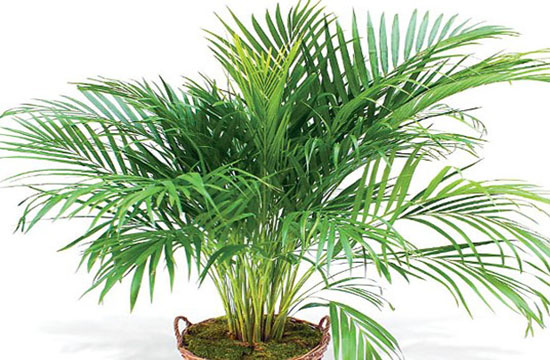
Chrysalidocarpus (Chrysalidocarpus) – Plant family: Palms. Homeland – Madagascar and the Comoros.
Chrysalidocarpus – a palm tree of the Arecaceae family, widespread in room culture. The genus got its name due to the yellowish color of the fruit. Translated from the ancient Greek chryseus – golden, karpos – fruit.

Sometimes the palms of this group are called the outdated name of areca. The genus includes about 20 species. The local name for this plant is Butterfly Palm. Most often grown in rooms yellowish chrysalidocarpus (C. lutescens).

Chrysalidocarpus increases air humidity, enriches air with ozone, oxygen. Capable of providing energy. Even a single plant can create the feeling of real thickets in your home. Removes harmful chemicals from the air. It is believed that the energy of chrysalidocarpus, like most palm trees, is dual: it gives positive energy and takes away negative energy.

Types and varieties of chrysalidocarpus: photo, name and description
Chrysalidocarpus refers to the so-called reed palms, which do not have a central trunk – they grow in a bush consisting of many leaves.

Its leaves are up to 90 cm long, graceful, pinnate; their yellowish petioles resemble reed stalks.

Thanks to thinly dissected leaves and numerous stems, chrysalidocarpus gives a lush crown that can decorate any interior.
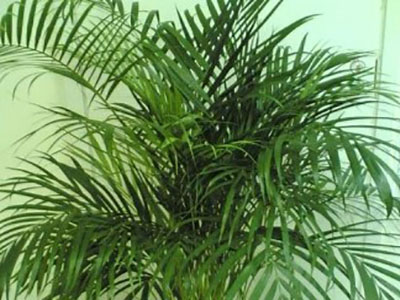
This culture grows slowly, reaching about 20–30 cm per year, while the bush expands greatly due to numerous root processes.

Under natural conditions, the Chrysalidocarpus palm tree blooms strongly in May – June, but there is no flowering in the apartment.

Inflorescences – panicles are formed in the axils of the leaves. The flowers are bisexual, white and yellow. The fruit is a globular yellow berry with a seed inside. Fruits are formed as a result of self-pollination.

Despite the fact that the genus includes many species of chrysalidocarpus (a photo with the names of some of them can be seen below), only two have received distribution as a houseplant:
Chrysalidocarpus yellowish (Ch. lutescens);

Chrysalidocarpus Madagascar (Ch. madagascariensis).

Chrysalidocarpus yellowish (Chrysalidocarpus lutescens) – bushy palm with numerous branches that extend from its base. The trunk at a young age, as well as the petioles of the leaves of a yellow tint, with small black specks. The leaf plates are smooth, strong, arcuate, not drooping, up to 2 m long and up to 90 cm wide.
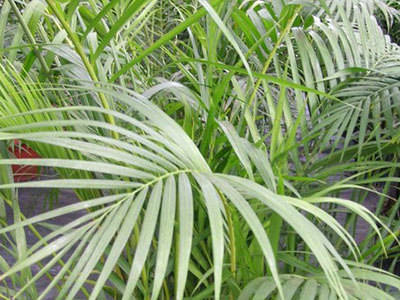
The leaves are attached to a thin, but strong furrowed petiole, covered with small scales.
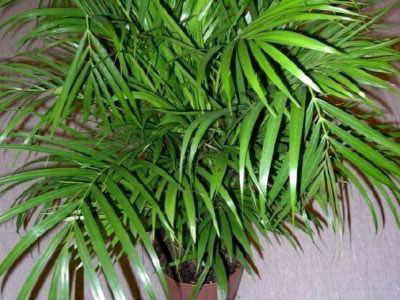
Its length is about 60 cm. The inflorescence is formed in the axils of the leaves, is a branched brush with small nondescript yellow flowers. The plant is dioecious.
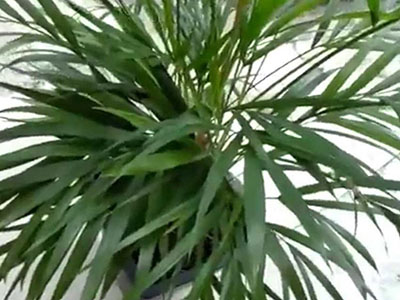
A variety of chrysalidocarpus – Madagascar (Chrysalidocarpus madagascariensis) – palm tree with one powerful strong trunk, the diameter of which can reach 30 cm.
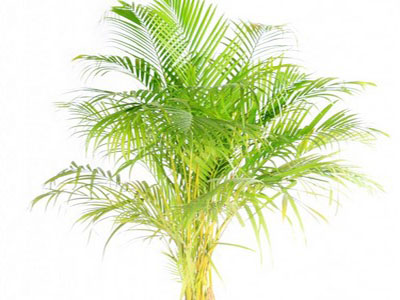
In height, it grows up to 9 m or more. The trunk is smooth, with pronounced rings, expanding slightly at the base.

The leaves are smooth, shiny, pinnate, their arrangement is fascicular, about 50 cm long. A long, branched inflorescence is formed in the axils of the leaves.

Both described types of chrysalidocarpus are optimally suited for home use as an ornamental culture that adorns the interior.


Growing chrysalidocarpus
Despite the tropical origin of this culture, it is not whimsical and demanding in content. A mandatory need when caring for chrysalidocarpus at home is a warm place where it will be grown and good lighting.
Location. This, as already noted, is a photophilous plant, so it should be placed on the southern windows. The palm does not like direct sun, preferring diffused light. In the summer, shading is required, especially if we are talking about a young individual. Adult areca chrysolidocarpus are not so whimsical in care, at home they can be kept in partial shade, but away from drafts. Overheating and drafts are the main negative factors for a tropical crop, they should be completely eliminated so as not to harm the health of the plant.
Temperature. The most comfortable temperature for areca is 20 – 28 degrees. Year-round temperature should be even, in winter not lower than 16-18 degrees. At lower temperatures, the palm tree will not die, but its growth will stop. Useful for her influx of fresh air. In summer you can keep it in the garden.
Air humidity and watering. When caring for areca, chrysalidocarpus requires the creation of high humidity, since this is a plant of the tropics. A pot with it is best placed on a pebble tray filled with water. It responds well to spraying. At least twice a month, the leaves should be washed with water. It is useful to cover the root neck with moss.
In summer, watering is plentiful, in winter – limited. Does not tolerate overdrying of an earthen coma.
Substratum and top dressing. Areca needs loose and nutritious soil, for its successful growth and development it will be necessary to apply fertilizers throughout the year. From March to August top dressing is made 2 times a month. From September to February – once a month. Fertilizers for decorative leafy plants or mineral dressings for palm trees are suitable for growing this crop.
If the chrysalidocarpus turns yellow and does not grow, then it’s time to change the pot to a larger and soil mixture. A substrate is suitable, which includes turf and leafy soil, humus, sand (2: 1: 1: 1). You can also use the following composition: clay-turf land, humus-leaf land, peat, sand (2: 2: 1: 1). It is recommended to add a small amount of crushed coal to the resulting mixture.
Suitable and special primer for palm trees from the store.
Transfer. The chrysalidocarpus flower is difficult to transplant, so it should be done only as a last resort, using the transshipment method with replacing the drainage layer and adding fresh soil. Young, rapidly developing individuals need an annual transplant. It is enough to transplant an adult palm tree every 3 years. Many flower growers, instead of transshipment, change the top layer of soil in a pot with the addition of a good layer of drainage.
Propagation of chrysalidocarpus by seeds and root suckers
Reproduction of chrysalidocarpus is carried out by seeds and root suckers, both of which are widely used by flower growers. Seeds germinate well at an air temperature of 23-25 °C. In order for the seeds to sprout successfully, it is recommended to pre-treat them by soaking them in a small container with water at room temperature for 3 to 4 days. After that, the seeds are planted in small pots with a light peat substrate and cleaned in a warm, lit place where the temperature is not lower than 20 degrees. Plants should be watered periodically, keep the substrate constantly moist, but avoid excess moisture. Seeds under such conditions will germinate in 3-4 months. When the first pair of leaves appears, the young palm tree can be transplanted into a separate pot.
Chrysolidocarpus is also propagated by root offspring, and this can be done at any time of the year. Near the main stem of an adult palm tree, there are always shoots of different sizes. For reproduction, those that reach 30 cm in height or more are suitable. The shoots are separated from the mother plant with a sharp knife very carefully so that the trunk of the palm tree is not damaged. All leaves are removed from the cut shoot, the cut site is treated with a fungicide and dried for 2 to 3 days.
Before planting, the root system is treated with an antibacterial drug and a growth stimulator. The stalk is planted in a prepared pot with a substrate of perlite or coarse sand and removed to a semi-shaded warm place with a temperature of 22 – 25 degrees. Rooting occurs within 2 months.
Why do chrysalidocarpus turn yellow and dry leaves: diseases and pests (with photo)
The most common pest of chrysalidocarpus is the spider mite, which appears, as a rule, with dry indoor air. You can detect a pest by carefully examining the plant. If there are cobwebs on the leaves, then this parasite attacked the palm.
To prevent its occurrence, you should constantly maintain high humidity, as well as spray the leaves with soft warm water. Insecticides will help to destroy the spider mite. It is necessary to collect the cobweb with a damp cloth and spray the palm tree with a medicinal solution.
When growing palm trees, the grower often encounters diseases of the leaves of chrysalidocarpus. If the room where the heat-loving areca is kept is cold, the leaves darken and their edges dry. Brown spots may appear on the leaf plates – this is a sign of the influence of sudden temperature changes from which the plant suffers.
It happens that the leaves of chrysalidocarpus turn yellow, most often this is due to insufficient watering, or from excess sunlight. To restore the plant, it is enough to eliminate the causes of its diseases. Yellowing and damage to the leaf plate can cause a mealybug that settles on the bottom of the leaf. When it is found, you need to treat the palm tree with alcohol diluted in water, and then spray it with insecticides.
If the leaves of chrysalidocarpus dry, and small yellow blotches appear on them, you should inspect the palm for the presence of a pest – a spider mite. How to deal with it is described above. A palm tree can also dry when heating devices are close to it. In this case, there are two ways to solve the problem: remove the areca pot to another place, or put a container with water near the battery, thus increasing the humidity of the air, which is what a moisture-loving culture needs.
Below, view informative photos on how to distinguish diseases and pests of chrysalidocarpus, they show external signs and manifestations on the plant.










